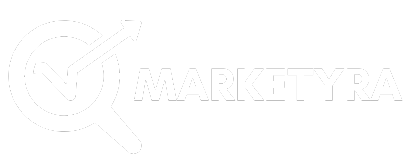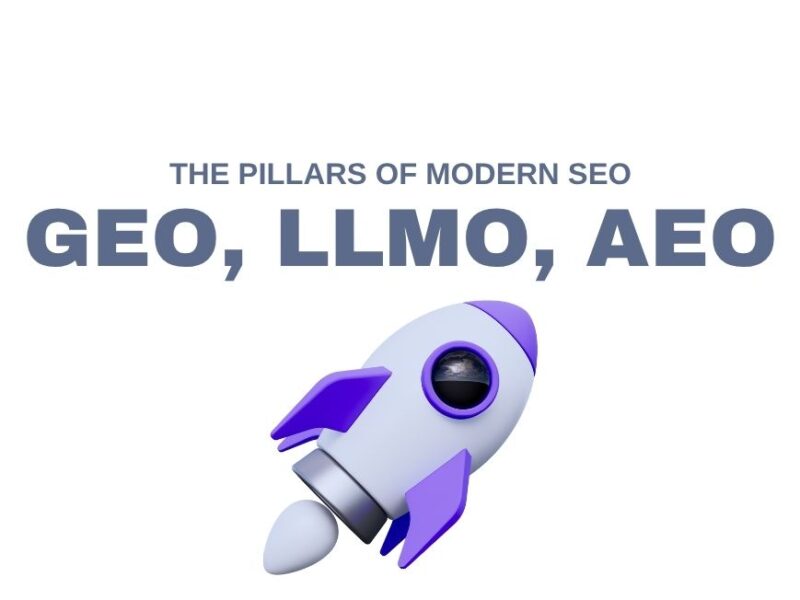On this page you will read detailed information about GEO, LLMO, AEO.
In the ever-evolving landscape of digital marketing, understanding the nuances that define the pillars of modern Search Engine Optimization (SEO) is crucial. As a professional navigating this dynamic field, you encounter terms like GEO, LLMO, and AEO with increasing frequency. Each represents a distinct facet of SEO, yet they collectively underscore a unified goal: enhancing online visibility and user engagement. By delving into these components, you gain insights that not only refine your strategies but also align them with current technological trends. This article explores how these elements, while distinct, are integral to a comprehensive SEO approach.
Unpacking SEO: The Foundation of Digital Marketing
The Core of Search Engine Optimization
Search Engine Optimization (SEO) stands as the bedrock of digital marketing strategies. It encompasses the art and science of enhancing online visibility and attracting organic traffic to websites. As businesses strive to carve out their niche in the vast digital landscape, understanding SEO becomes imperative. At its core, SEO involves optimizing web content to rank higher on search engine results pages (SERPs), ensuring that potential customers find your business easily and efficiently.
The Role of GEO, LLMO, and AEO
Within the broader context of SEO, specific elements such as GEO, LLMO, and AEO play pivotal roles. GEO refers to geographical targeting, which helps businesses reach local audiences by optimizing content for location-based searches. It’s crucial for businesses with physical locations or those targeting specific regions. LLMO and AEO—Language and Local Market Optimization and Answer Engine Optimization, respectively—further refine this approach. LLMO focuses on tailoring content to meet the linguistic and cultural nuances of diverse markets, while AEO aims at optimizing content to provide direct answers, particularly through voice search technologies.
SEO’s Ever-Evolving Landscape
The dynamic nature of SEO constantly challenges marketers to adapt and innovate. With the digital realm continuously evolving, staying abreast of current trends and algorithm updates is vital. The integration of GEO, LLMO, and AEO within traditional SEO practices illustrates how the industry adapts to new consumer behaviors, such as mobile and voice searches. Embracing these changes ensures that businesses maintain their competitive edge by delivering relevant, accessible, and engaging content to their audience.
In essence, while GEO, LLMO, and AEO present new opportunities, they are all extensions of the fundamental principles of SEO, aiming to enhance the online presence of businesses worldwide.
GEO: Geographical Optimization in SEO
Understanding Geographical Optimization
Geographical Optimization (GEO) in SEO is a pivotal element in tailoring search results to the user’s physical location. By refining your content and strategies with a focus on location-specific keywords and phrases, you not only enhance visibility within certain geographic areas but also cater to local audiences seeking relevant, immediate solutions. As search engines continue to prioritize user experience, incorporating GEO into your SEO strategy becomes essential.
Why GEO Matters
GEO is not just about adding a city name to your keywords—it’s about creating a rich tapestry of localized content that resonates with your target audience. Consider the differences in user intent between a “pizza restaurant” search in New York City versus one in a small town. The expectations and results vary significantly, driven by locality. By emphasizing GEO, businesses can better serve local queries, improve engagement, and drive conversion rates.
Implementing GEO Strategies
To effectively implement GEO strategies, start by conducting comprehensive local keyword research. Tools like Google Keyword Planner can help identify popular search terms in your area. Next, ensure your business is listed accurately on local directories and platforms such as Google My Business. This not only improves visibility but also builds trust with potential customers. Lastly, create content that appeals to local interests and events, which can significantly boost your relevance in local searches.
Incorporating GEO into your overall SEO plan requires a deliberate approach, but the rewards are substantial. By aligning your digital presence with geographical nuances, you position your business favorably within the community, enhancing both reach and influence.
LLMO: Leveraging Language Models for Optimization
The Evolution of Language Models in SEO
In the ever-dynamic world of SEO, the rise of Language Models has been nothing short of transformative. Large Language Models (LLMO) are at the forefront, offering a nuanced understanding of human language. These models, like OpenAI’s GPT, have the ability to comprehend context, intent, and semantics at an unprecedented scale. This evolution signifies a shift from traditional keyword-focused SEO to a more holistic approach where content quality and relevance take precedence.
Enhancing Content Creation and Optimization
LLMO enables content creators and SEO professionals to craft more engaging and relevant content. By leveraging these models, you can generate content that not only addresses user queries effectively but also aligns with search engine algorithms that prioritize user intent. The integration of LLMO into your SEO strategy can help ensure that your content is not just keyword-rich but also contextually relevant, improving both user engagement and search engine rankings.
Improving User Experience
One of the critical advantages of LLMO in SEO is its ability to enhance user experience. By understanding the nuances of language and user intent, LLMO allows for the creation of more intuitive and interactive content. This leads to a more personalized user experience, as content is tailored to meet the specific needs and queries of users. In effect, LLMO makes it possible to deliver content that resonates with audiences, keeping them engaged and encouraging longer time spent on your site.
In conclusion, leveraging language models for optimization is not just a trend but a necessity in modern SEO. By embracing LLMO, you can stay ahead in the competitive digital landscape, ensuring that your SEO strategies are both innovative and effective.
AEO: The Rise of Answer Engine Optimization
Understanding Answer Engine Optimization
As search engines evolve, so too do the strategies to optimize for them. Enter Answer Engine Optimization (AEO), a burgeoning discipline within SEO aimed at improving visibility in search engines designed to deliver direct answers. Unlike traditional SEO, which focuses on driving traffic via listed hyperlinks, AEO emphasizes the importance of providing concise, relevant answers to user queries directly within search results—think Google’s Featured Snippets or voice search responses.
The Value of Direct Answers
In today’s fast-paced digital world, users demand quick and accurate information. AEO helps meet this demand by ensuring your content is structured to be easily extracted by search engines to provide those direct answers. This shift is driven largely by the rise of voice search and digital assistants, as users increasingly ask questions out loud rather than typing them. Thus, optimizing for direct answers not only enhances user experience but also increases the likelihood of being featured prominently in search results.
Implementing AEO Strategies
To effectively implement AEO within your broader SEO strategy, consider the following approaches:
- Focus on Question-Based Content: Craft content that directly addresses common user questions related to your niche or industry.
- Utilize Structured Data: Apply schema markup to your content to help search engines understand the context and purpose of your information.
- Prioritize Clarity and Conciseness: Ensure your content is clear and to the point, particularly in the opening paragraphs or within answer boxes.
By integrating AEO into your SEO strategy, you align your content with the evolving landscape of search technology, ensuring you remain visible and relevant in an ever-competitive digital space.
In the previous post, we had shared information about How Schema Markup Enhances Your Website’s SEO, so read that post also.
Integrating GEO, LLMO, and AEO for Comprehensive SEO Success
Understanding the Synergy of GEO, LLMO, and AEO
To achieve comprehensive SEO success, businesses must seamlessly integrate GEO, LLMO, and AEO strategies. While each element contributes uniquely to SEO, their combined effect can significantly enhance a website’s visibility and user engagement.
GEO (Geotargeting SEO) focuses on optimizing content for specific locations. By tailoring content to local markets, businesses can engage more effectively with regional audiences. This approach involves using location-specific keywords and optimizing for local search engines to increase relevance and drive local traffic.
LLMO (Language Localization and Multilingual Optimization) takes SEO a step further by adapting content for various languages and cultural nuances. This ensures that businesses can connect with a more diverse audience and improve their global reach. By implementing LLMO, companies can enhance user experience and ensure more precise and personalized communication, which often leads to higher conversion rates.
AEO (Answer Engine Optimization) is gaining traction with the rise of voice search and AI-driven technologies. AEO focuses on optimizing content to provide direct, concise answers to user queries. By structuring content to meet the demands of answer engines, businesses can improve their chances of appearing in featured snippets and voice search results.
Implementing a Unified Strategy
By aligning GEO, LLMO, and AEO, businesses craft a robust SEO strategy that addresses diverse user needs. This integration requires a holistic approach to content creation and optimization. Key steps include:
- Conducting extensive keyword research to cover local and global search intents.
- Creating a multilingual content strategy that respects cultural differences.
- Ensuring that content answers user questions succinctly, enhancing AEO performance.
In conclusion, the synergy of GEO, LLMO, and AEO enables a more comprehensive approach to SEO, ultimately improving search engine rankings and user engagement on a global scale.
Conclusion
In navigating the intricate landscape of modern SEO, understanding the nuances of GEO, LLMO, and AEO is indispensable. As you integrate these elements into your strategy, you harness the full potential of search optimization, ensuring that your content is not only visible but also relevant and engaging to your audience. By mastering these pillars, you position yourself at the forefront of digital marketing, capable of adapting to evolving algorithms and consumer behaviors. Ultimately, it’s about refining your approach to remain competitive in an ever-changing environment, ensuring that your brand resonates deeply with a global audience while maintaining local relevance.
Disclaimer
The content published on the Marketyra blog is for educational and informational purposes only. While we strive to share accurate and up-to-date digital marketing tips, strategies, and trends, we do not guarantee any specific results. Readers are advised to use their own judgment before applying any tips or advice provided. Marketyra is not liable for any losses, damages, or issues arising from the use of blog content.
So friends, today we talked about GEO, LLMO, AEO, hope you liked our post.
If you liked the information about GEO, LLMO, AEO, then definitely share this article with your friends.
👉 Need help with SEO or digital marketing services?
Feel free to call us at 📞 +91-9306925861, email us at 📧 admin@marketyra.com to get in touch!






